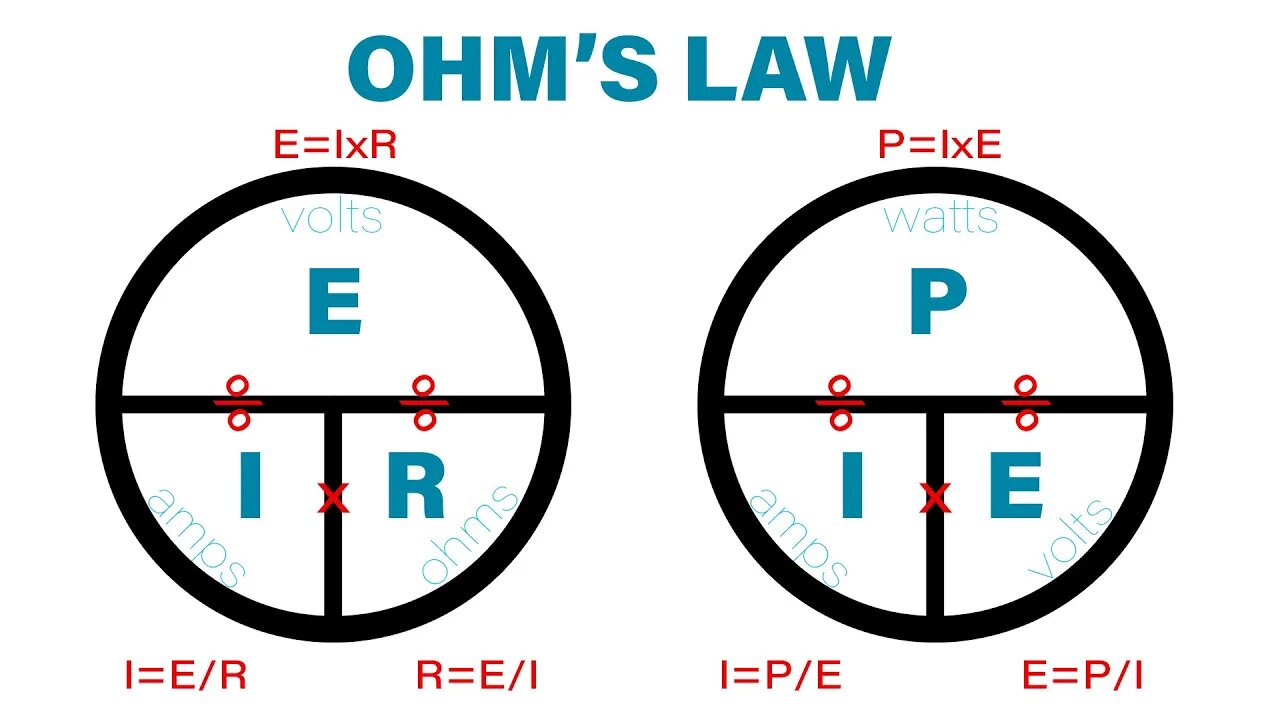Premium Only Content

Episode 39 - Using Ohm's Law In The Field - ELECTRICIAN MATH REAL WORLD EXAMPLES
Doing math, for many people, is one of the things that holds them back from advancing in their career as an electrician. “I’m just not good at math,” I often hear. Knowing how to apply Ohm’s Law calculations in the field is crucial for your ability to think critically, on the fly, about what may be happening in a circuit - and electrician math is really not that scary. Let’s dive in.
W👾🤖PRACTICE EXAMS🤖👾
https://electricianu.com/product-category/practice-exams/
😎👕MERCH👕😎
https://electricianu.com/eu-merch/
📲👥SOCIALS👥📲
Instagram - https://www.instagram.com/electrician_u
Discord - https://discord.gg/7ykYfbh
Facebook Page - https://www.facebook.com/theelectricianu
Facebook Group - https://bit.ly/2tz7eQh
TikTok - https://www.tiktok.com/@electricianu
SPONSOR
ROGERS - https://www.rogersservices.com
First off, what is ohm’s law? The short answer is a relationship. It’s a relationship that exists between electrical units of measure, chiefly volts, amps, ohms, and watts. Each of these values have nearly perfect mathematical interactions, and when you start to raise or lower one, the others change to keep the relationship balanced.
This becomes extremely useful when you’re troubleshooting and need to find a missing value. You can take readings in your environment to find some knowns, which you can then plug into an equation and do some simple math to solve for any unknowns. Ok enough talking about it, let’s look at a few examples:
LIGHTS ON A CIRCUIT
One thing we do often as electricians is figure out how many light-fixtures we can install on a circuit. Too many and we’ll keep tripping breakers. This one’s easy so pull out a pencil and paper and do this as I go through it.
We have a 120-volt, 20-amp circuit with that was run out to a parking lot for pole-lighting. Each pole has a 400-watt MH lamp installed in it. It appears 9 light fixtures were installed on this circuit, and the breaker keeps tripping. Math time.
Start with the knowns. We know we have volts, amps, and watts right? We also know each fixture consumes a certain amount of wattage, and when we multiply volts and amps together we get wattage. So 120 x 20 = 2,400 total watts available on this circuit. And we know each lamp is 400w.
Now the unknowns. So we could divide 2,400 total circuit watts by 400 watts per lamp and find that there should only be 6 lamps on this circuit. 3 less than how it was wired. We can also figure out how many watts the 9 existing 400w MH lamps are consuming. Simply take 9 x 400 = 3,600 watts. 3,600 watts can also be expressed in amperage if we divide 3,600 by 120-volts - which comes out to 30-amps. This means the existing circuit with 9 lamps on it, is drawing 30 amps as it’s consuming 3,600 watts of energy! This will trip a 20-amp breaker any day of the week. We would either need to drastically reduce the wattage of each lamp, re-pull larger conductors AND change the breaker to a larger breaker, or cap a few of these poles off and reduce the number that are allowed to turn on.
CONTINUOUS LOADS
For the above example, I used simple math so we could hack through the concept. However, we need to think about this example one step further. Since this is a commercial property the chances for these lights to stay on for 3 or more hours at a time, makes them a continuous load. Breakers for continuous loads should not be loaded up to more than 80% of the circuit rating. This means that rather than loading 20-amps of lighting on a 20-amp breaker is too much. We really need to multiply that 20-amps by 80% (0.8) to get 16-amps. If we can only run 16-ams of current on this circuit, that also changes the wattage.
For example, we take the same scenario in the example above. 120-volts, 400-watt lamps, but instead of a 20-amp circuit - we use 16-amps for this continuous load. 120 x 16 = 1920 total circuit watts. 1920 / 400 = 4.8 fixtures. So in essence, a 20-amp circuit with continuous lighting loads on it should only have 4 400-watt fixtures on it.
FINDING WATTAGE OF A LAMP
One impressive trick to pull out when you’re in a parking lot doing pole-lights is to find the wattage of a lamp that’s 30-ft in the air without even getting up in a ladder or a bucket truck. Every pole has a hand-hole with wires in it. So this means we have an opportunity to test for values. Every lamp or bulb is rated in wattage, so we know we’re trying to find what the wattage of that lamp is using other values.
CONTINUE READING FULL ARTICLE @ https://www.electricianu.com/podcast/episode-39-using-ohms-law-in-the-field-electrician-math-real-world-examples
#electrical #ohmslaw #electricianmath
--
Subscribe - https://www.youtube.com/c/electricianu?sub_confirmation=1
IF YOU ENJOY THESE VIDEOS PLEASE SUBSCRIBE AND "LIKE" THEM ABOVE. ALSO CHECK OUT THE ELECTRICIAN U PODCAST ON ITUNES AND SPOTIFY!!
-
 0:56
0:56
Electrician U
1 year ago90° Drill Attachment!!! - What Hand Tools Are YOU Missing
5.76K1 -
 24:23
24:23
Nikko Ortiz
1 day agoArmy Officers Might Need Help...
1.99K6 -
 56:38
56:38
DeProgramShow
4 days agoDeprogram with Ted Rall and John Kiriakou: "Jake Tapper on the Global Hunt for an Al Qaeda Killer”
49.6K7 -
 8:00:11
8:00:11
GritsGG
13 hours agoBattlefield 6? Here... We... Go...
5.79K -
 1:04:10
1:04:10
The Connect: With Johnny Mitchell
3 days ago $14.43 earnedTucker Carlson's INSANE Take On Civil War In America, Calls For Fascism
30.7K89 -
 LIVE
LIVE
Lofi Girl
3 years agolofi hip hop radio 📚 - beats to relax/study to
163 watching -
 2:04:24
2:04:24
FreshandFit
11 hours agoGianni Blu Meets 305
188K10 -
 2:37:35
2:37:35
Badlands Media
12 hours agoDEFCON ZERQ Ep. 014: Marker Nine – The Ninth War Is Coming
64.8K68 -
 2:10:43
2:10:43
Inverted World Live
8 hours agoTop General Outsourcing Decisions to ChatGPT | Ep. 127
80.4K9 -
 2:46:27
2:46:27
Laura Loomer
8 hours agoEP151: Democrats Meet With Terror Tied Islamic Group During Government Shutdown
24.4K16